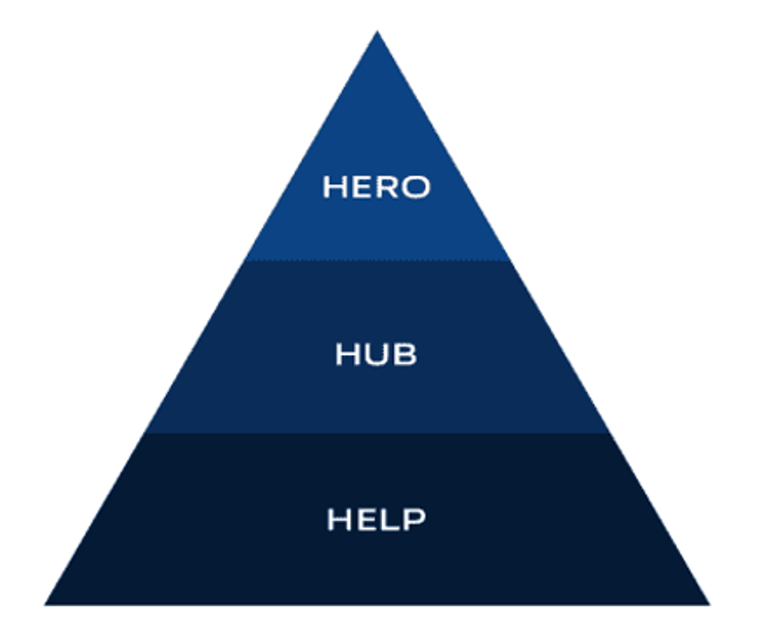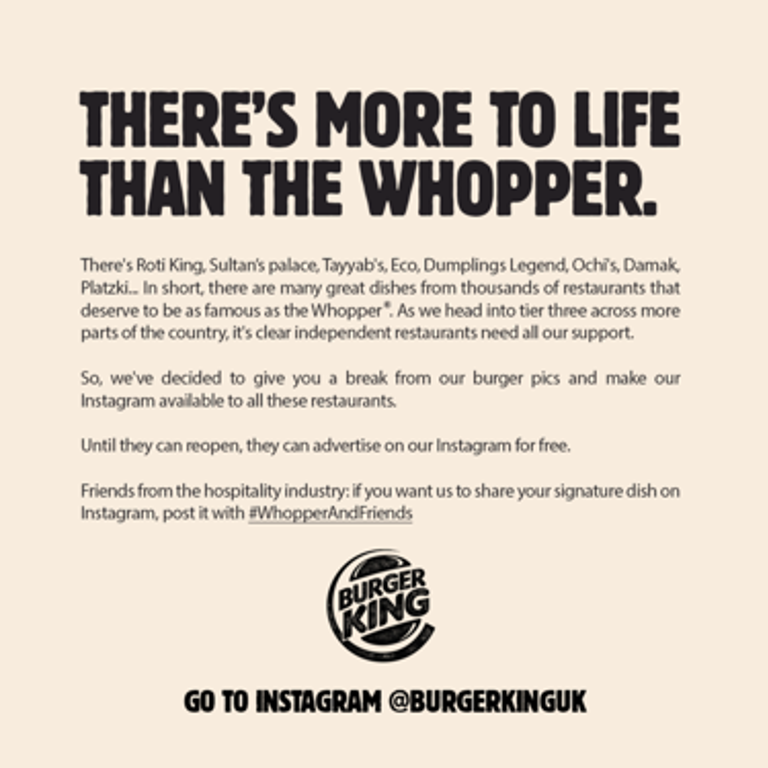Communicating in a crisis: Content and Digital PR best practice
GrowthIn times of crisis, like the COVID-19 pandemic, what brands say, and more importantly how they say it, is integral to sustaining and growing your business.
During tough economic conditions, brought on by global crises, it’s only natural for many brands to adopt short term tactics or even pause areas of marketing spend over long term brand building (Source: Raconteur). But past recessions have taught us that the more successful marketers commit to long-term branding projects. Pausing activities such as content and digital PR now will hinder your long-term strategy in the future.
While some brands go into hibernation, others will push sales in the hope to alleviate the impact on immediate revenues. Either way, your customers are watching. Modern consumers demand more from brands. They want clear communication, vision, transparency and rapport. 61% customers have changed their brand preferences or the way they shop during the COVID-19 pandemic, turning to brands that could communicate and interact with them in a more impactful way.
So how can you use digital PR and content strategy to make sure you tackle a crisis well? How can your brand navigate waters such as the ones we’ve seen in 2020 and come out undefeated?
Luckily for you, we have a few pointers and models that will help you set up a holistic content marketing and digital PR strategy to make sure you leave no stones unturned and come out of this hard time on top.
The hero hub help model
Invented for YouTube creators, the hero hub help model has since been used by content marketers to ensure their strategy is comprehensive and structured. It is based on the 3 tiers system starting from ‘help’ (also called hygiene), passing through to ‘hub’ and finally peaking at ‘hero’, and is a perfect model for digital PR in times of crisis.

Help (or hygiene)
The best place to start. At this stage you are checking that your house is in order before starting to build. Right now, customers will need brands to be responsive and site information to be accurate. Business operations are changing all the time, so it’s important to have clear open lines of communication with your customers. In all honesty, this should be something you do regardless, not just in times of crisis. Here is a checklist of the things you should tackle, giving customers the information they need.
Fix your site
Put yourself in your customers’ shoes. What are they going to want to know? Now’s the time to fix technical issues and improve UX, but also, to ensure that you’re displaying the information your customers will want to see, for example how COVID has affected your operations and what that may mean e.g.: reduced staff, busier than normal calls, opening times, social distancing etc.
Google my business and directories
Take some time to review your Google my business page, input the right business opening hours if these have changed and update contact information so that customers can get hold of you if they need to. Now is also the time to make sure all directories are in order. That page you compiled in 2011 with your old address on it and no picture, that just won’t help anyone.
Consistent communication
Ensure you update information across all channels and platforms. For example, if something has changed on your website contact page, make sure you reflect that change on your Facebook account and other social media platforms. Different customers demographics will use different channels to get their information, so make sure they are all on the same page.
Hub
People may be asking specific questions using search engines, or the search functionality of your site. This is your opportunity to provide the answers with a useful hub of information.
Build content pages that are crisis related
Whether it’s a pop-up page that welcomes customers on your site or a blog post, make sure you have content on site that explains to your audience what you are doing during these difficult times. Customers expect brands to address the current situation, and keep this page updated regularly. By now you will have noticed most websites have published a ‘our response to COVID-19’ section. This is short and snappy and gives site visitors a quick overview of how the brand is dealing with the crisis.
Hero
A lot of brands will ensure they cover off the help and hub phases, but often pause at this stage, especially during critical times. Why? It takes time and money. And marketing spend is often paused or spent in other areas for short-term wins. However, as discussed, brand building in times of a crisis is integral to business recovery. It puts your brand on the front foot, and customers will remember the brands who were there for them, building stronger connections and affinity at a time when other brands fell silent.
The hero part is made up of creative campaigns that add something to the conversation. It is designed to proactively raise awareness of your brand by being creative and innovative in an attempt to stand out. It’s a chance for you to raise your voice and be heard. But the hero campaigns that speak to customers the most, which are also aligned with your brand’s purpose, are the ones that are most memorable.
So why invest in Hero content during a crisis?
The changing media landscape
Keeping up with the trends and themes in the media right now is a tough job. One week it’s all about the new government legislation to contain the crisis, and the next week something happens that completely changes what journalists are talking about. Rather than second guessing the trends and be on the back foot, plan your campaign and get on the front foot. It’ll be quicker and easier to take to market, allowing you to seize an opportunity. Ensure your message is focussed on your value proposition in a way that will resonate with your customers’ needs.
Your competitors
Remember, your customers are watching. They are paying attention to what brands do and say and silence really does speak louder than words in this case. This means that if your competitors are engaging in hero campaigns, they may leave you to bite the dust and eventually lose ground to them. Creating hero campaigns and content is supposed to be an always-on strategy, but even more so in times of crisis, people need to see that you are actively communicating with them. Your campaign should not only show your customers that you ‘get them’, but also showcase that you are in fact aware and involved in current affairs. Whatever it is, make sure it is presented in a genuine way and always keep an eye on what the competition is doing.
Brand advocacy
People don’t choose brands based on their offering alone. They choose brands because they believe in them and they resonate with their inner values. People also choose brands based on how clear and consistent their communication is. So, if your brand advocates for certain values, you should make sure to structure your content and Digital PR efforts around those, to convey a message of consistency and transparency to your customers. Think of a brand like Lush for example. They are sustainable, vegetarian and vegan, involved in charity causes and create a fun environment for customers and staff. People don’t just buy a Lush product because they need a shampoo or a body lotion, they do because – yes they need it – but also they want to support that whole value chain creation. They are happy to give Lush their money because they know it will be for a good cause. Not every brand can or should align themselves with a charity, but establish what is valuable to your target audience and tap into that with your branded content and PR.
Positivity for the win
At the beginning of 2021 we can confidently say we all need a pick me up. 2020 and the COVID-19 pandemic has been (and still is) very difficult for human beings to navigate; so many of us are looking for the light at the end of the tunnel. There is a way to carefully balance the reality of the situation whilst remaining positive and upbeat in your messaging. A hero campaign is a way you can empathise with your customers by understanding how they are feeling but at the same time giving them hope and positivity in such difficult times. Just make sure that you stay sensitive to what has been going on and don’t avoid the elephant in the room.
How to implement hero campaigns in times of crisis?
Here we are, at the core of your digital PR in times of crisis. The sky is the limit with creative campaigns, so long you judge the room right and your message aligns with your brand’s and customers’ values. But where do you start? How do you even think of hero campaigns? Here are some great examples for inspiration.
Give-back campaigns
Now’s the time to build a community. As cliché as it sounds, we ARE stronger together, so don’t be afraid to show people you care and give a hand to those in need.
Say thank you
Have you seen the McCann Belgrade campaign thanking medical professionals? Simple, easy and to the point. They created a series of visuals where doctors had superheroes masks outlines etched on their faces, rather than the outline created by regular protective masks. The immediate message? Medical staff is at the forefront of the COVID-19 pandemic and they truly are our heroes.

Is this something your brand could do? Do you have any way you could say thank you to someone? It could be keyworkers, your customers or employees. Show appreciation, show you hear them.
Support local businesses
The pandemic has affected everyone in different ways. More than ever local businesses and suppliers will need our help. Is your business in a position to partner or support a small or local business in any way?
A great example is Burger King. Last month they made their social media page available for any local business to use as an advertising platform. It was a small price to pay for the fast-food giant, but they received hugely positive press coverage, whilst at the same time they tapped into our desire to see support and caring during the crisis.

Conduct quantitative research
Has your sector been impacted massively by the crisis? Do you have any stats you can share? A less creative, but definitely impactful campaign could be researching into how the global crisis has affected your sector and changed people’s perception of your industry. This is a great way to have some fresh interesting stats for journalists and content creators, while making sure you stay on topic and address the proverbial elephant in the room.
For example, at the beginning of the first lockdown in May 2020, Halfords conducted a survey across the UK asking drivers questions about tyre safety and car use during lockdown periods. This campaign revealed fresh statistics and data, relevant to the current landscape and public conversation, while maintaining a tie to Halfords product and service offering.
Give out useful resources
You are the expert in your field, so show it. Give your audience useful guides, infographics, tools, interactive landing pages to keep it engaged and informed. It could be as simple as a ‘10 DIY projects you can do yourselves in the house’ or ‘The home workout that will get you ripped for summer’. The topics you cover obviously depend on your business and your sector. Ask yourself, what knowledge does your business have that can make someone’s life easier or a little bit more fun?
Summary
During a crisis, there’s a lot that your brand can do to navigate choppy waters, and every brand will have its own way of communicating with their audience. The hero hub help model can guide you in communicating with your customers in these difficult times, leaving no stone unturned and ensuring that both your site and your PR communications are genuine and on brand.
Etch Growth have been supporting our partners with their own communications strategy during this crisis, leveraging content and digital PR where relevant and necessary. To find out how we can help with your organisation’s digital PR strategy, simply get in touch

